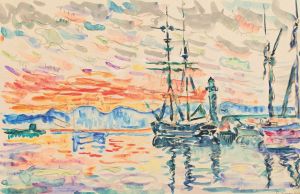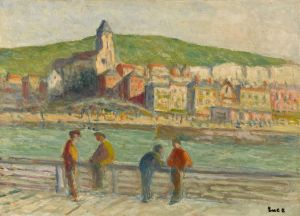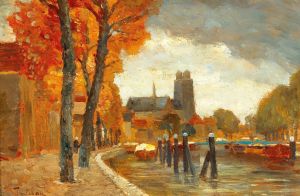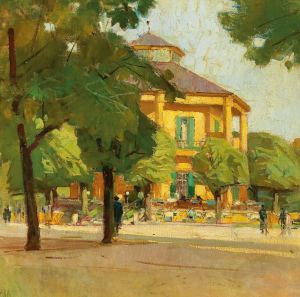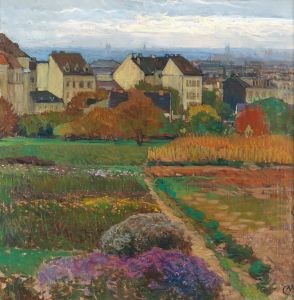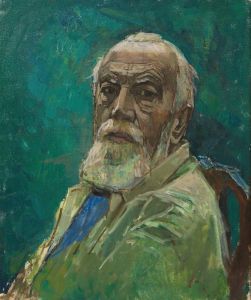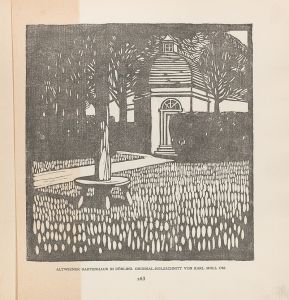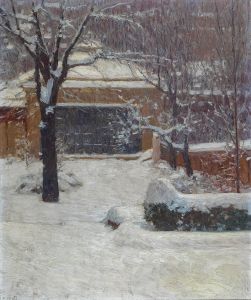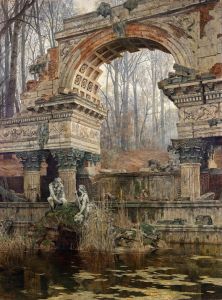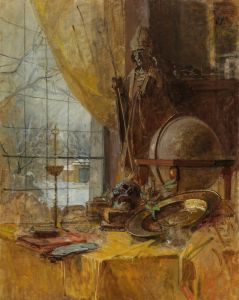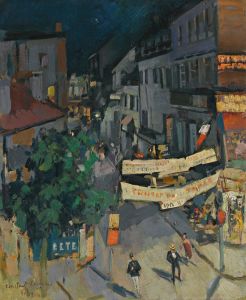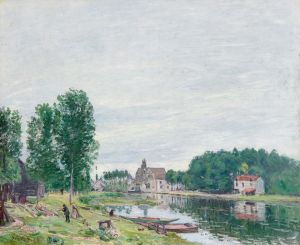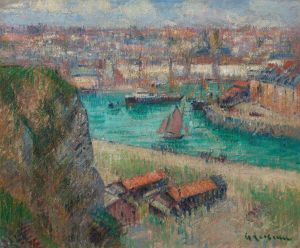
Landing stage at Heustadlwasser
A hand-painted replica of Carl Moll’s masterpiece Landing stage at Heustadlwasser, meticulously crafted by professional artists to capture the true essence of the original. Each piece is created with museum-quality canvas and rare mineral pigments, carefully painted by experienced artists with delicate brushstrokes and rich, layered colors to perfectly recreate the texture of the original artwork. Unlike machine-printed reproductions, this hand-painted version brings the painting to life, infused with the artist’s emotions and skill in every stroke. Whether for personal collection or home decoration, it instantly elevates the artistic atmosphere of any space.
Carl Moll (1861-1945) was an Austrian painter known for his association with the Vienna Secession, a movement that sought to break away from traditional academic art and promote modernist approaches. One of his notable works is "Landing Stage at Heustadlwasser," which exemplifies his skill in capturing serene landscapes and his keen eye for light and color.
"Landing Stage at Heustadlwasser" depicts a tranquil scene along the Heustadlwasser, a branch of the Old Danube in Vienna. The painting showcases Moll's characteristic style, which often includes a harmonious blend of natural elements and a meticulous attention to detail. The composition features a landing stage, likely used for small boats, set against the backdrop of calm waters and lush greenery. The serene atmosphere is enhanced by Moll's use of soft, diffused light, which creates a sense of peacefulness and quietude.
Moll's technique in this painting reflects his broader artistic influences and his commitment to the principles of the Vienna Secession. The movement, founded in 1897 by a group of Austrian artists including Gustav Klimt, aimed to create a new style that was free from the constraints of academic art. Moll, as one of the founding members, embraced this vision and sought to explore new ways of representing the world around him. His work often features a blend of realism and impressionism, with a focus on capturing the ephemeral qualities of light and atmosphere.
In "Landing Stage at Heustadlwasser," Moll's use of color is particularly noteworthy. The palette is dominated by soft greens and blues, which evoke the natural beauty of the scene. The reflections in the water are rendered with delicate brushstrokes, creating a sense of depth and movement. This attention to the interplay of light and color is a hallmark of Moll's work and demonstrates his ability to convey the subtle nuances of the natural world.
The painting also reflects Moll's interest in the landscapes of Vienna and its surroundings. Heustadlwasser, as part of the Old Danube, was a popular recreational area for the residents of Vienna, offering a peaceful escape from the bustling city. Moll's depiction of this location captures its tranquil charm and provides a glimpse into the leisurely activities of the time.
Carl Moll's contribution to the Vienna Secession and his impact on Austrian art cannot be overstated. His works, including "Landing Stage at Heustadlwasser," continue to be celebrated for their technical excellence and their ability to evoke a sense of place and mood. Through his paintings, Moll invites viewers to appreciate the beauty of the natural world and the quiet moments of everyday life.
Overall, "Landing Stage at Heustadlwasser" is a testament to Carl Moll's artistic vision and his mastery of landscape painting. It remains an important piece within his oeuvre and a fine example of the Vienna Secession's innovative approach to art.





